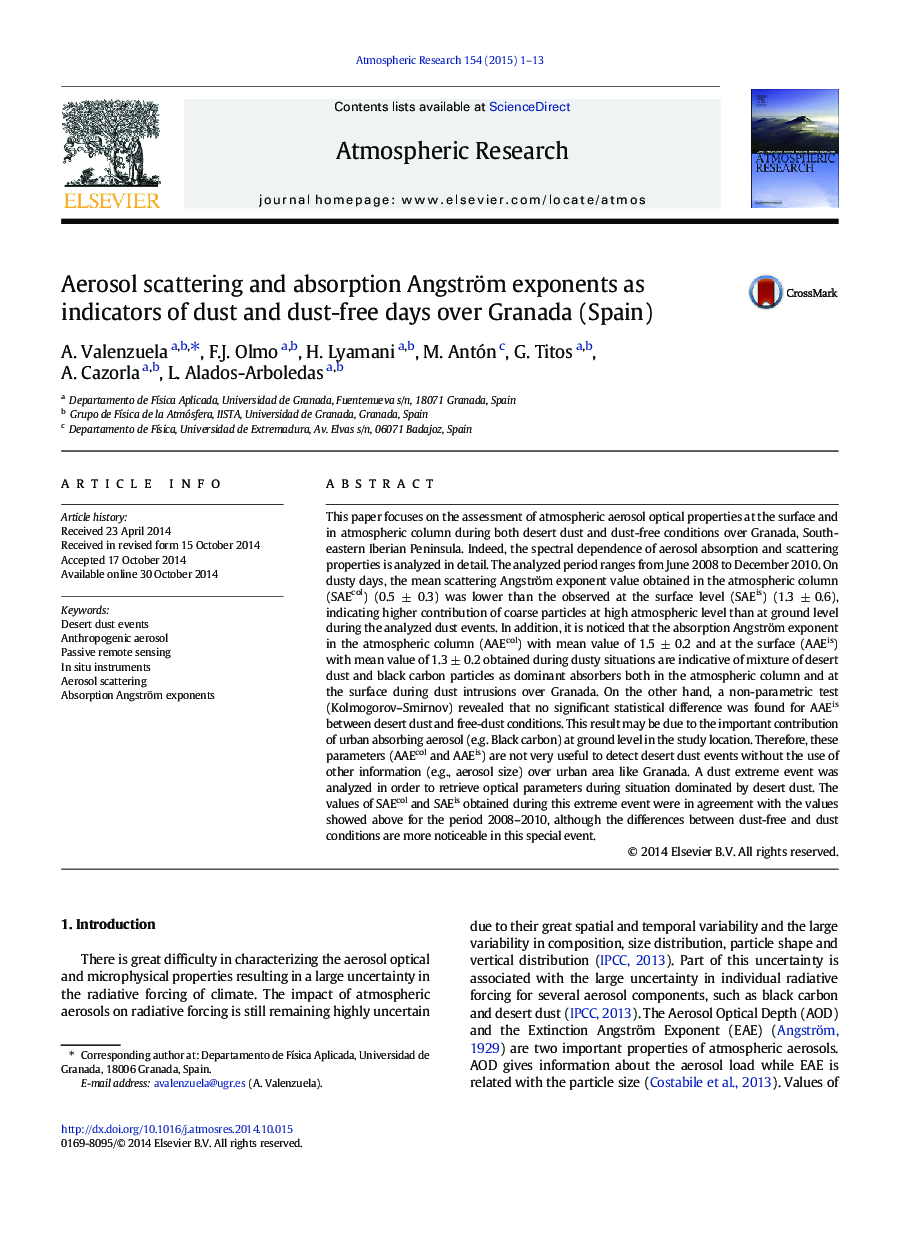| Article ID | Journal | Published Year | Pages | File Type |
|---|---|---|---|---|
| 4449843 | Atmospheric Research | 2015 | 13 Pages |
•Scattering Angstrom Exponent values was indicative of a significant contribution of large particles to the total atmospheric aerosol load.•Absorption Angstrom Exponent values obtained during desert dust conditions did not suggest a typical desert dust situation.•A non-parametric test revealed no significant differences were found for Absorption Angstrom Exponent between dust and free-dust conditions.
This paper focuses on the assessment of atmospheric aerosol optical properties at the surface and in atmospheric column during both desert dust and dust-free conditions over Granada, South-eastern Iberian Peninsula. Indeed, the spectral dependence of aerosol absorption and scattering properties is analyzed in detail. The analyzed period ranges from June 2008 to December 2010. On dusty days, the mean scattering Angström exponent value obtained in the atmospheric column (SAEcol) (0.5 ± 0.3) was lower than the observed at the surface level (SAEis) (1.3 ± 0.6), indicating higher contribution of coarse particles at high atmospheric level than at ground level during the analyzed dust events. In addition, it is noticed that the absorption Angström exponent in the atmospheric column (AAEcol) with mean value of 1.5 ± 0.2 and at the surface (AAEis) with mean value of 1.3 ± 0.2 obtained during dusty situations are indicative of mixture of desert dust and black carbon particles as dominant absorbers both in the atmospheric column and at the surface during dust intrusions over Granada. On the other hand, a non-parametric test (Kolmogorov–Smirnov) revealed that no significant statistical difference was found for AAEis between desert dust and free-dust conditions. This result may be due to the important contribution of urban absorbing aerosol (e.g. Black carbon) at ground level in the study location. Therefore, these parameters (AAEcol and AAEis) are not very useful to detect desert dust events without the use of other information (e.g., aerosol size) over urban area like Granada. A dust extreme event was analyzed in order to retrieve optical parameters during situation dominated by desert dust. The values of SAEcol and SAEis obtained during this extreme event were in agreement with the values showed above for the period 2008–2010, although the differences between dust-free and dust conditions are more noticeable in this special event.
